Optimization of a Focusable and Rotatable Shear-Wave Periodic Permanent Magnet Electromagnetic Acoustic Transducers for Plates Inspection
Abstract
:1. Introduction
2. Distributed Line Sources Models of PPM EMATs
2.1. The Far-field Response Induced by Single Line Source
2.2. The Total Far-Field Response Induced by Distributed Line Sources
3. Effects of Some Line Sources Parameters on Performance of PPM EMATs
3.1. FEM of Proposed PPM EMATs
3.2. Effect of The Inner Coil Width on Performance of PPM EMATs
3.3. Effect of Adjacent Line Sources Spacing on Performance of PPM EMATs
3.4. Effect of Rotation Angle of Line Sources on Performance of PPM EMATs
4. Experimental Analysis
5. Conclusions
Acknowledgments
Author Contributions
Conflicts of Interest
References
- Thring, C.B.; Fan, Y.; Edwards, R.S. Multi-coil focused EMAT for characterization of surface-breaking defects of arbitrary orientation. NDT E Int. 2017, 88, 1–7. [Google Scholar] [CrossRef]
- Wang, Y.; Wu, X.; Sun, S.; Li, J. Enhancement of the excitation efficiency of a torsional wave PPM EMAT array for pipe inspection by optimizing the element number of the array based on 3-D FEM. Sensors 2015, 15, 3471–3490. [Google Scholar] [CrossRef] [PubMed]
- Huang, S.; Zhang, Y.; Wang, S.; Zhao, W. Multi-Mode Electromagnetic Ultrasonic Lamb Wave Tomography Imaging for Variable-Depth Defects in Metal Plates. Sensors 2016, 16, 628. [Google Scholar] [CrossRef] [PubMed]
- Clougha, M.; Fleming, M.; Dixon, S. Circumferential guided wave EMAT system for pipeline screening using shear horizontal ultrasound. NDT E Int. 2017, 86, 20–27. [Google Scholar] [CrossRef]
- Lee, J.S.; Kim, Y.Y.; Cho, S.H. Beam-focused shear-horizontal wave generation in a plate by a circular magnetostrictive patch transducer employing a planar solenoid array. Smart Mater. Strut. 2009, 18, 1–10. [Google Scholar] [CrossRef]
- Feiran, S.; Zhenguo, S.; Zhang, W.; Chen, Q. Review of modeling method and optimum design of EMAT transmitters based on Lorentz principle. J. Mech. Eng. 2016, 52, 12–21. [Google Scholar]
- Hill, S.; Dixon, S. Frequency dependent directivity of periodic permanent magnet electromagneitc acoustic transducers. NDT E Int. 2014, 62, 137–143. [Google Scholar] [CrossRef]
- Thompson, R.B. Physical principles of measurements with EMAT transducers. Phys. Acoust. 1990, 19, 157–200. [Google Scholar]
- Maxfield, B.W.; Kuramoto, A.; Hulbert, J.K. Evaluating EMAT designs for selected applications. Mater. Eval. 1987, 45, 1166–1183. [Google Scholar]
- Dixon, S.; Hill, S.; Fan, Y.; Rowlands, G. The wave-field from an array of periodic emitters driven simultaneously by a broadband pulse. J. Acoust. Soc. Am. 2013, 133, 3692–3699. [Google Scholar] [CrossRef] [PubMed]
- Ma, Q.; Jiao, J.; Hu, P.; Zhong, X.; Wu, B.; He, C. Excitation and detection of shear horizontal waves with electromagnetic acoustic transducers for nondestructive testing of plates. Chin. J. Mech. Eng. 2014, 27, 428–436. [Google Scholar] [CrossRef]
- Huang, S.; Zhao, W.; Zhang, Y.; Wang, S. Study on the lift-off effect of EMAT. Sens. Actuators A 2009, 153, 218–221. [Google Scholar] [CrossRef]
- Rajagopal, P.; Drozdz, M.; Skelton, E.A. On the use of absorbing layers to simulate the propagation of elastic waves in unbounded isotropic media using commercially available finite element packages. NDT E Int. 2012, 51, 30–40. [Google Scholar] [CrossRef]
- Ribichini, R. Modeling of Electronmagnetic Acoustic Transducers. Ph.D. Thesis, Imperial College London, London, UK, 2011. [Google Scholar]
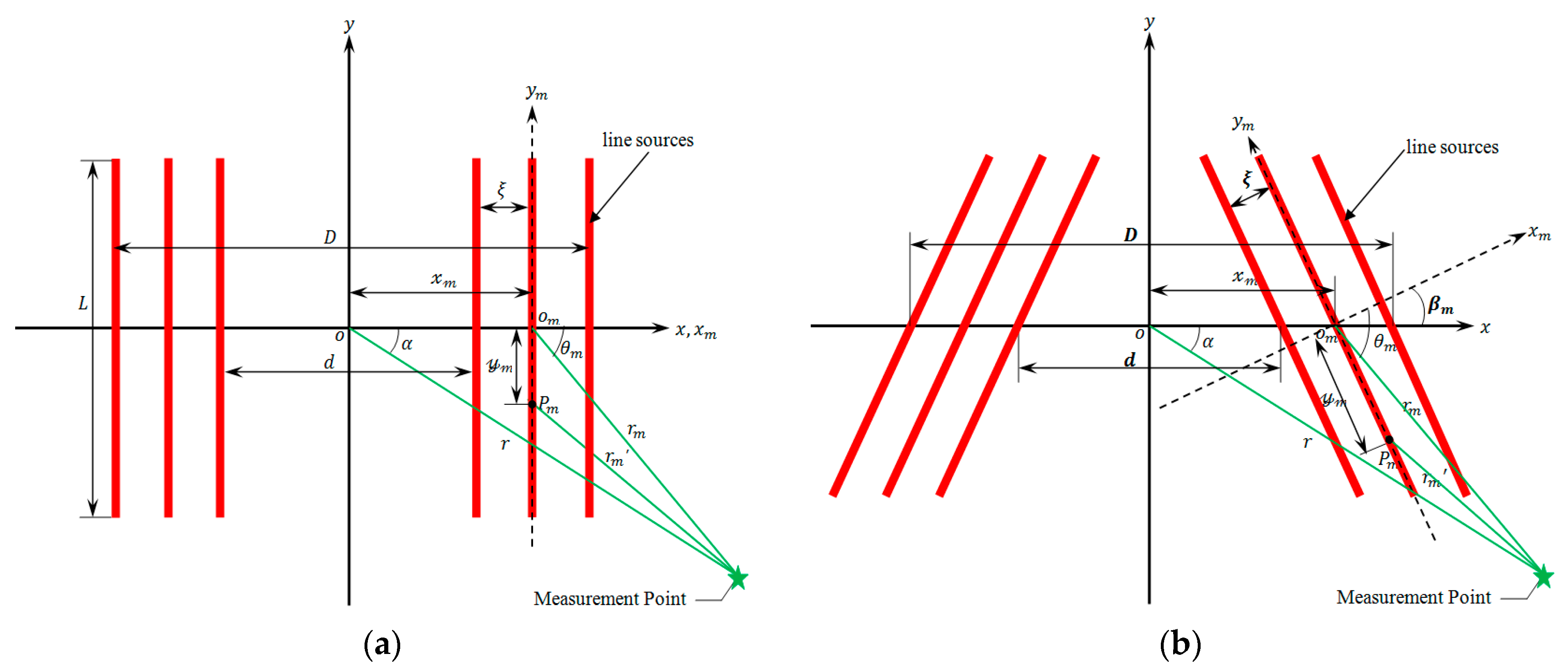

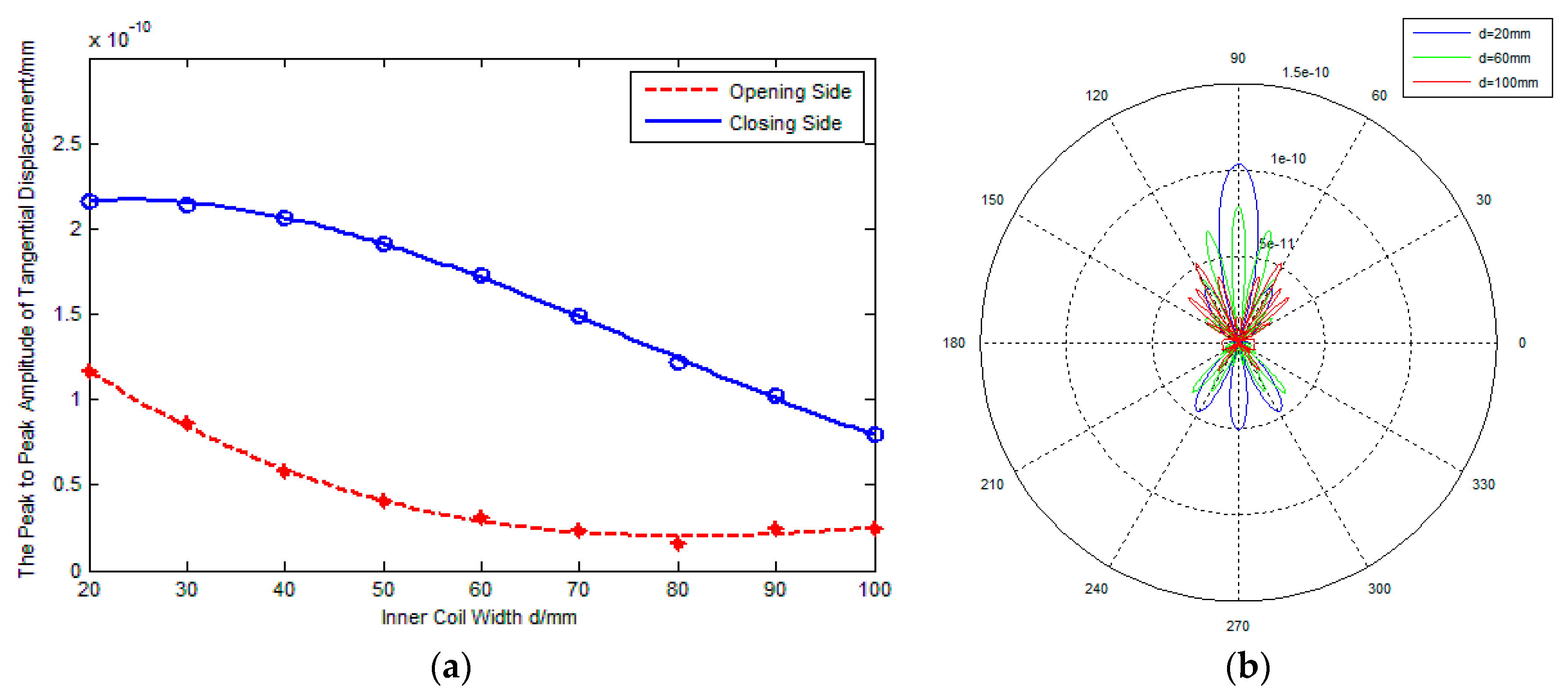

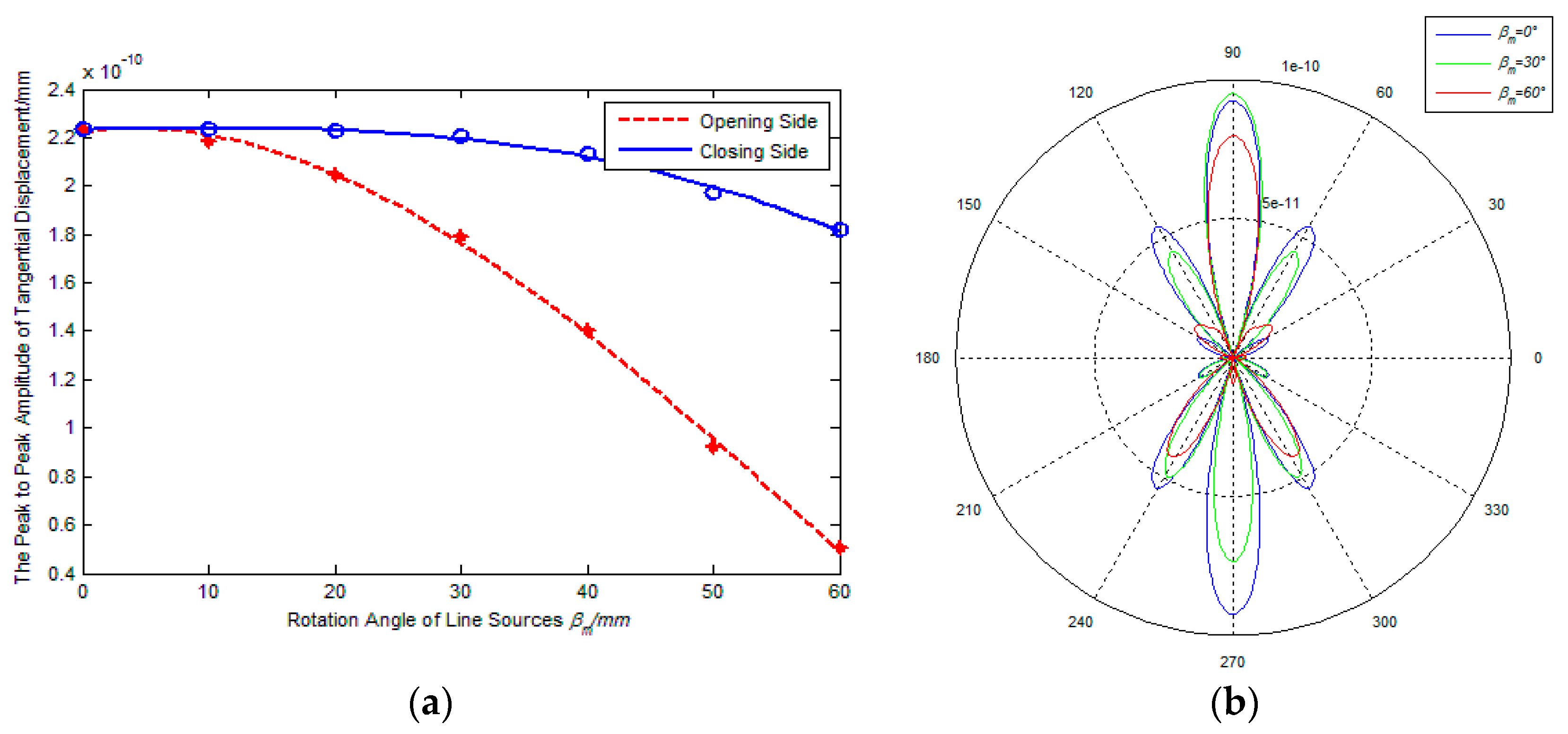
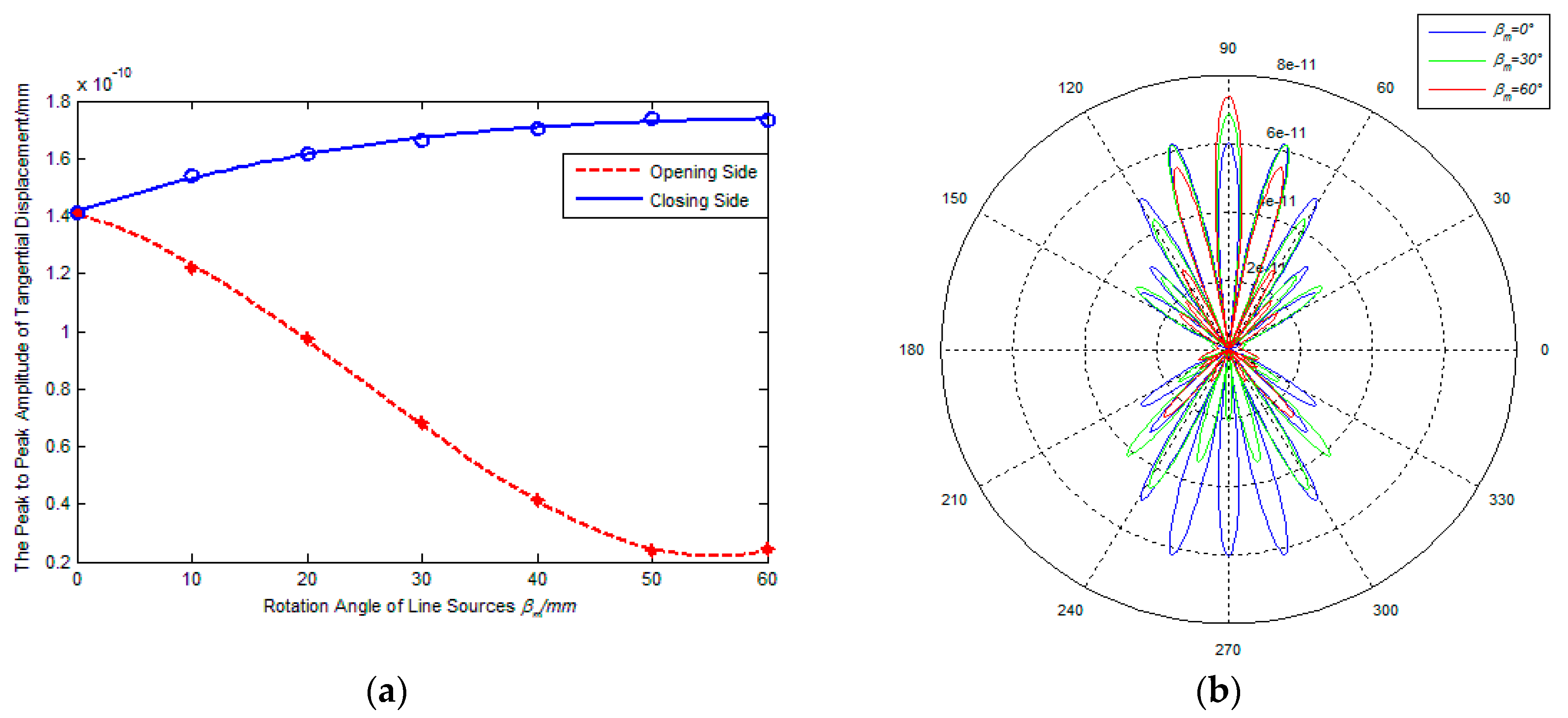

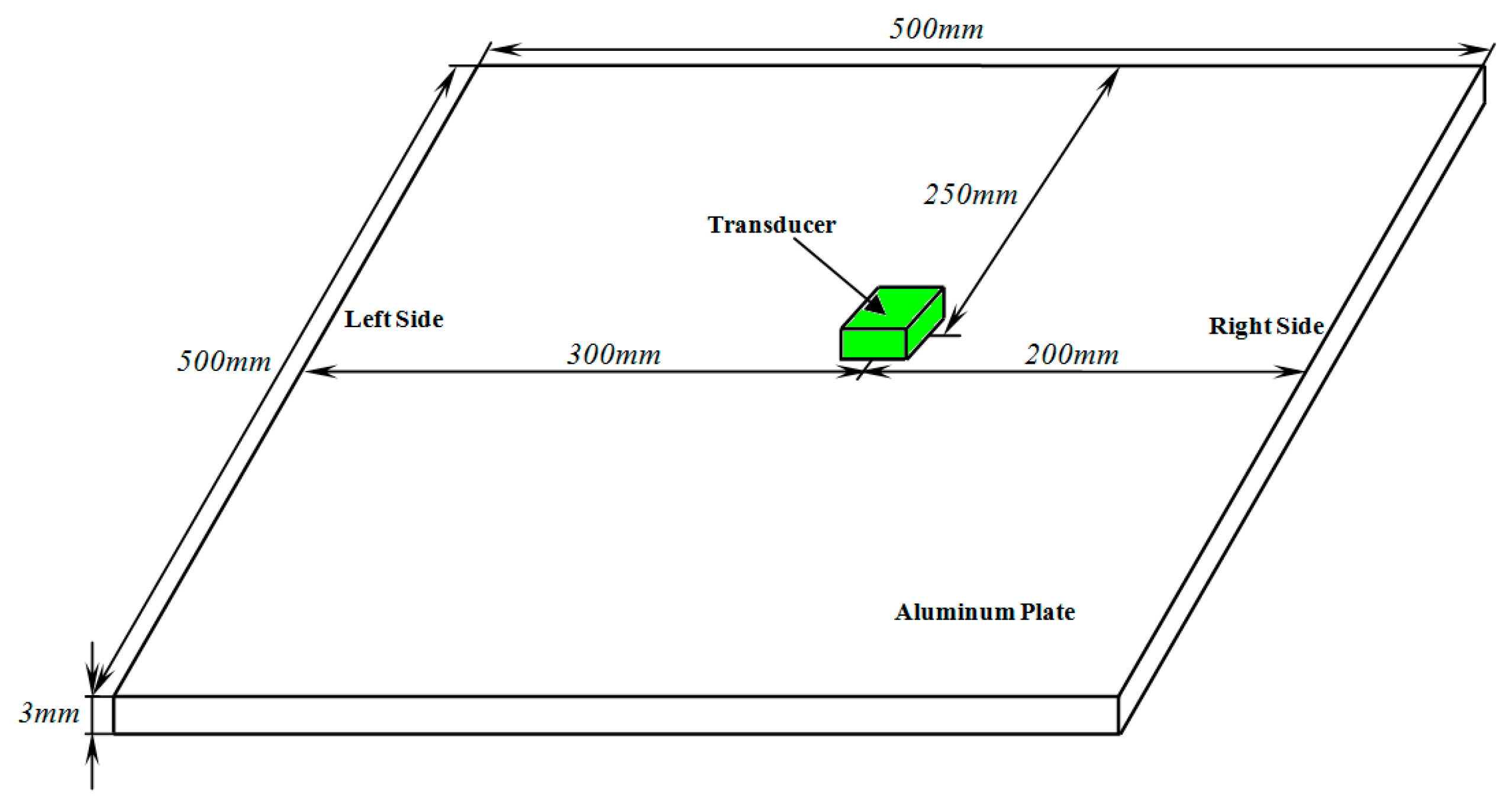
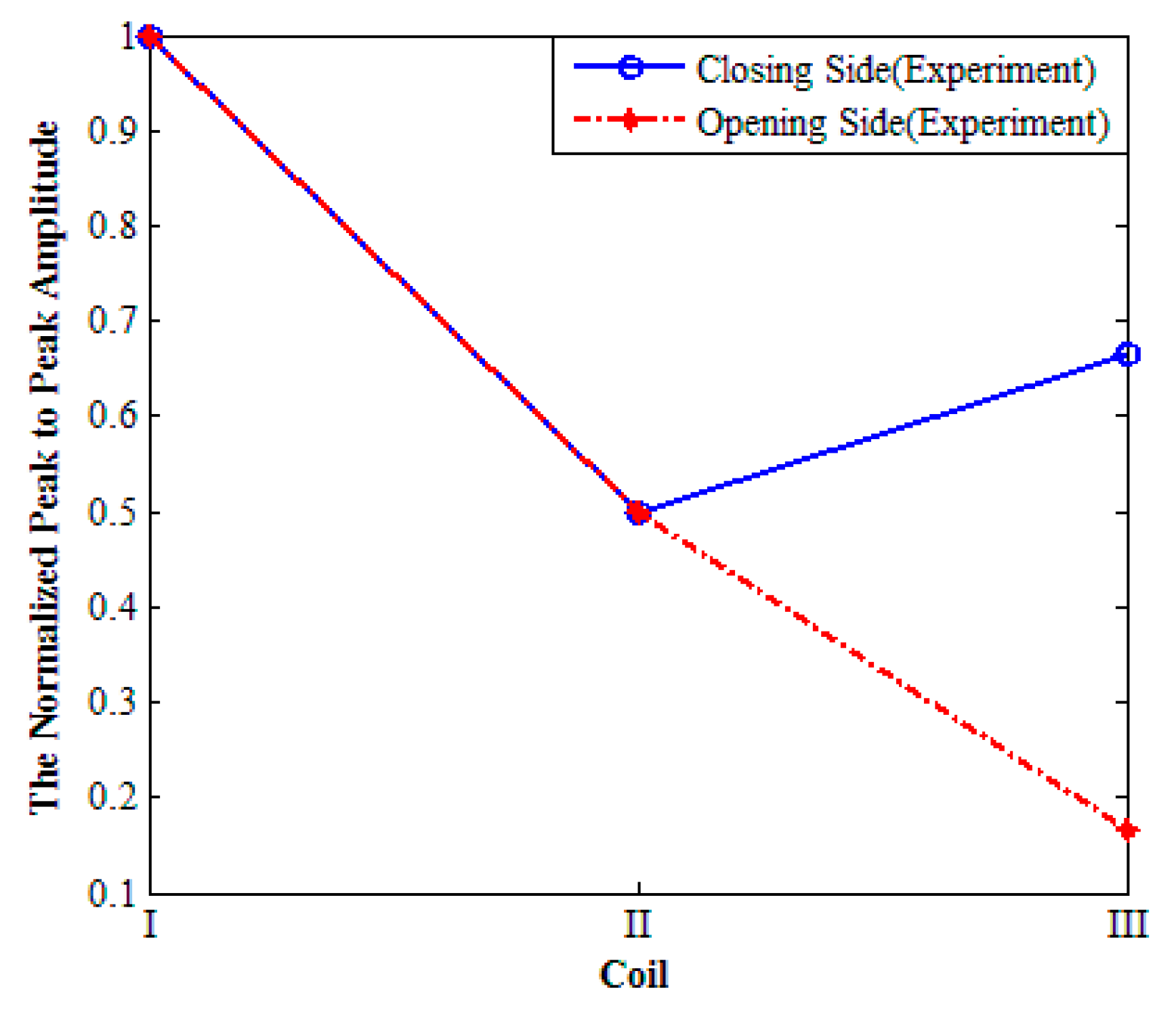
| Parameter | Value | Parameter | Value |
|---|---|---|---|
| Length | 500 mm | Conductivity | 3.5E-7 |
| Width | 500 mm | Elasticity modulus | 70 |
| Thickness | 3 mm | Poisson’s ratio | 0.33 |
| Density |
| Inner Coil Width (d) | Rotation Angle of Line Sources () | Spacing of Adjacent Line Sources () | Turns of Coils (N) | |
|---|---|---|---|---|
| Coil I | 10 mm | 0° | 0.905 mm | 25 |
| Coil II | 70 mm | 0° | 0.905 mm | 25 |
| Coil III | 70 mm | 30° | 0.905 mm | 25 |
© 2017 by the authors. Licensee MDPI, Basel, Switzerland. This article is an open access article distributed under the terms and conditions of the Creative Commons Attribution (CC BY) license (http://creativecommons.org/licenses/by/4.0/).
Share and Cite
Song, X.; Qiu, G. Optimization of a Focusable and Rotatable Shear-Wave Periodic Permanent Magnet Electromagnetic Acoustic Transducers for Plates Inspection. Sensors 2017, 17, 2722. https://doi.org/10.3390/s17122722
Song X, Qiu G. Optimization of a Focusable and Rotatable Shear-Wave Periodic Permanent Magnet Electromagnetic Acoustic Transducers for Plates Inspection. Sensors. 2017; 17(12):2722. https://doi.org/10.3390/s17122722
Chicago/Turabian StyleSong, Xiaochun, and Gongzhe Qiu. 2017. "Optimization of a Focusable and Rotatable Shear-Wave Periodic Permanent Magnet Electromagnetic Acoustic Transducers for Plates Inspection" Sensors 17, no. 12: 2722. https://doi.org/10.3390/s17122722





